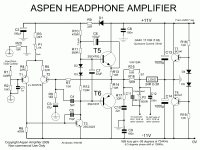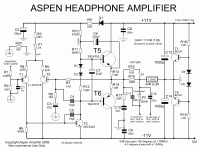Member
Joined 2009
Paid Member
Aha! Ze name, you no like Monsieur? You vish to change it? Suggestions?
I don't mind, it's not mine anyway, lots of other people in this design!
You could change it it PAKSA, for Phone AKSA, and this interestingly is the Indonesian word for FORCE. It is also a Tagalog word, but I can't find the meaning.....
Or even something of Greek origin, like Psi, to hint at something telepathic in its performance?
Cheers,
Hugh
I don't mind, it's not mine anyway, lots of other people in this design!
You could change it it PAKSA, for Phone AKSA, and this interestingly is the Indonesian word for FORCE. It is also a Tagalog word, but I can't find the meaning.....
Or even something of Greek origin, like Psi, to hint at something telepathic in its performance?
Cheers,
Hugh
Last edited:
Hey, I just had a revelation. Since this amp is a great big collaboration, why not center the name around this idea? Just calling HAKSA or whatever could give the mistaken impression that Hugh himself solely designed it.
Also, I find Gaetan's post #632 to be an interesting suggestion, though I don't know that it's necessary. The reason for me suggesting to lower the feedback network impedance was for the NFB's sake, and I don't see it as necessary for the input. The input side is passive and so shouldn't have a significant affect on odd order harmonics or higher order harmonics, the only harmonics generated will probably be a very small H2 from the LTP base current. So:
It is probably advisable, if we modify the feedback network impedance, to modify the input impedance the same way to reduce offset, but only if we are driving the input with an opamp.
- keantoken
Also, I find Gaetan's post #632 to be an interesting suggestion, though I don't know that it's necessary. The reason for me suggesting to lower the feedback network impedance was for the NFB's sake, and I don't see it as necessary for the input. The input side is passive and so shouldn't have a significant affect on odd order harmonics or higher order harmonics, the only harmonics generated will probably be a very small H2 from the LTP base current. So:
It is probably advisable, if we modify the feedback network impedance, to modify the input impedance the same way to reduce offset, but only if we are driving the input with an opamp.
- keantoken
Hey, I just had a revelation. Since this amp is a great big collaboration, why not center the name around this idea? Just calling HAKSA or whatever could give the mistaken impression that Hugh himself solely designed it.
Also, I find Gaetan's post #632 to be an interesting suggestion, though I don't know that it's necessary. The reason for me suggesting to lower the feedback network impedance was for the NFB's sake, and I don't see it as necessary for the input. The input side is passive and so shouldn't have a significant affect on odd order harmonics or higher order harmonics, the only harmonics generated will probably be a very small H2 from the LTP base current. So:
It is probably advisable, if we modify the feedback network impedance, to modify the input impedance the same way to reduce offset, but only if we are driving the input with an opamp.
- keantoken
Hello keantoken
Yes, this amp is a great big collaboration, but the HAKSA still base on the Aksa amp, so the name HAKSA seem perfect for me, but we can do a poll if enough guys ask for another name.
And for my post #632, Doug Self, in his book (Audio Power Amplifiers-D.Self vol.3 P.86 ) made that circuit mod to lower the input noise but even with the LTP bootstap it still under 15k ohm input impedance. And the "Aksa sound" come in parts from the high impedance feedback network, so Self's circuit type ideas could change the sound signature of the HAKSA. So maby my suggestion was not a so good ideas and we could keep the Haksa feedback network as it is.
Bye
Gaetan
Last edited:
A few minor mods to the HAKSA to incorporate Crossfeed, reduced Zin and more data.
This completes the amplifier, the crossfeed, and the virtual earth. A non-inverting, opamp buffered very low phase shift tone control to follow.
Cheers,
Hugh
This completes the amplifier, the crossfeed, and the virtual earth. A non-inverting, opamp buffered very low phase shift tone control to follow.
Cheers,
Hugh
Attachments
Last edited:
Hi Hugh,
didn't know you got your own channel here, haven't been around here for a very long time but congrats to your own corner!
Nice little headphone amp there and nice choice of transistors too!
I was going to ask you why you choose the 2N5401 shown in the simulation schematics in the beginning of the thread but now I see you opted for the BC557, what's your reason for the change?
Cheers Michael
didn't know you got your own channel here, haven't been around here for a very long time but congrats to your own corner!
Nice little headphone amp there and nice choice of transistors too!
I was going to ask you why you choose the 2N5401 shown in the simulation schematics in the beginning of the thread but now I see you opted for the BC557, what's your reason for the change?
Cheers Michael
Hi Michael,
Thank you for your post. Yes, nice little forum, most grateful to the owner, so I thought it would be nice to give something back.
5401s are rated to 150V, reasonably fast. This application is low voltage, so 557Bs would be better as they are faster, lower Cob, and much higher beta. The VAS is the best I've yet used, 1.8pF, 150V, 200MHz, 50mA, and inexpensive. The outputs are much faster than the usual choice, MJE15030/31, and while not so high current, their linearity is as good and they are cheaper. For this application, very good choice.
On top of that, all these are commonly available except the 3423, and I have plenty of stock of all of them (though not for resale!).
Cheers,
Hugh
Thank you for your post. Yes, nice little forum, most grateful to the owner, so I thought it would be nice to give something back.
5401s are rated to 150V, reasonably fast. This application is low voltage, so 557Bs would be better as they are faster, lower Cob, and much higher beta. The VAS is the best I've yet used, 1.8pF, 150V, 200MHz, 50mA, and inexpensive. The outputs are much faster than the usual choice, MJE15030/31, and while not so high current, their linearity is as good and they are cheaper. For this application, very good choice.
On top of that, all these are commonly available except the 3423, and I have plenty of stock of all of them (though not for resale!).
Cheers,
Hugh
HP Amp Amendment
Michael's comment reminded me I had not simulated the Loop gain for BC557B, so I did it again today and came up with slightly different lag compensation and phase lead values. This has resulted in a full two degree reduction in phase shift at 100KHz, which is no bad thing. Apologies, it's set in concrete now!
Cheers,
Hugh
Michael's comment reminded me I had not simulated the Loop gain for BC557B, so I did it again today and came up with slightly different lag compensation and phase lead values. This has resulted in a full two degree reduction in phase shift at 100KHz, which is no bad thing. Apologies, it's set in concrete now!
Cheers,
Hugh
Attachments
Hugh, I realized I should ask you this. Until now I haven't thought to understand how exactly you made your choice of devices.
How much do you believe the actual performance curves of an individual transistor (Ic vs Hfe/Vbe, etc.) affect it's sound as opposed to passive factors such as Cob, Ft and AC characteristics?
I'm sort of asking you how important DC performance is as opposed to AC performance.
PS, the amp is awesome I think, painfully nitpicked and scrutinized, it has had a rough childhood but will surely be strong for it. A masterpiece I believe.
- keantoken
How much do you believe the actual performance curves of an individual transistor (Ic vs Hfe/Vbe, etc.) affect it's sound as opposed to passive factors such as Cob, Ft and AC characteristics?
I'm sort of asking you how important DC performance is as opposed to AC performance.
PS, the amp is awesome I think, painfully nitpicked and scrutinized, it has had a rough childhood but will surely be strong for it. A masterpiece I believe.
- keantoken
Member
Joined 2009
Paid Member
the amp is awesome I think, painfully nitpicked and scrutinized, it has had a rough childhood but will surely be strong for it. A masterpiece I believe.
It's the mid-teenage years that worry me - when we start building and listening there will be more subjective emotions coming into things - and I share your optimism for a very positive outcome !
Yes, though if he acts up we may have to cut an arm off and replace it with something better. Or perhaps restrain him a little to keep him under control. They're under a lot of pressure these days because of the internet - it cultivates (sometimes incredible) expectations.
EDIT: Hugh, I've sent you one or two emails, in case they got buried in spam or perhaps you just haven't had the time.
- keantoken
EDIT: Hugh, I've sent you one or two emails, in case they got buried in spam or perhaps you just haven't had the time.
- keantoken
Last edited:
Kean/Bigun,
Presently at a friend's on the other side of Melbourne, will answer on return.
This is Step #1, no amp is yet built, so I could never be sure this is the cat's meow. We must be patient, lay out the pcbs, and build it (though in reverse order, preferably!)
Hugh
Presently at a friend's on the other side of Melbourne, will answer on return.
This is Step #1, no amp is yet built, so I could never be sure this is the cat's meow. We must be patient, lay out the pcbs, and build it (though in reverse order, preferably!)
Hugh
Normal sounds in nature are always blended because both your ears hear the noise. But in headphones, the ears are isolated. This can cause fatigue when your ears are hearing completely different sounds that were designed to be played on speakers where there is always natural crossover.
So in order to make headphones perform better for those who have these issues, someone of years past designed a crossfeed which mixes the left and right channels in a way that is natural to the brain.
- keantoken
So in order to make headphones perform better for those who have these issues, someone of years past designed a crossfeed which mixes the left and right channels in a way that is natural to the brain.
- keantoken
Yes, but recordings aren't consistent in how they record left and right channels, so we (if I understand the committee) figure it's better to be safe than sorry. I'm not sure, but I believe there is a bypass switch for the crossfeed.
EDIT: the schematic shows a variable crossfeed pot, so you get a knob to determine how much you want. Perhaps then a bypass switch is not necessary?
- keantoken
EDIT: the schematic shows a variable crossfeed pot, so you get a knob to determine how much you want. Perhaps then a bypass switch is not necessary?
- keantoken
- Home
- More Vendors...
- AKSA
- Aspen Headphone Amp

